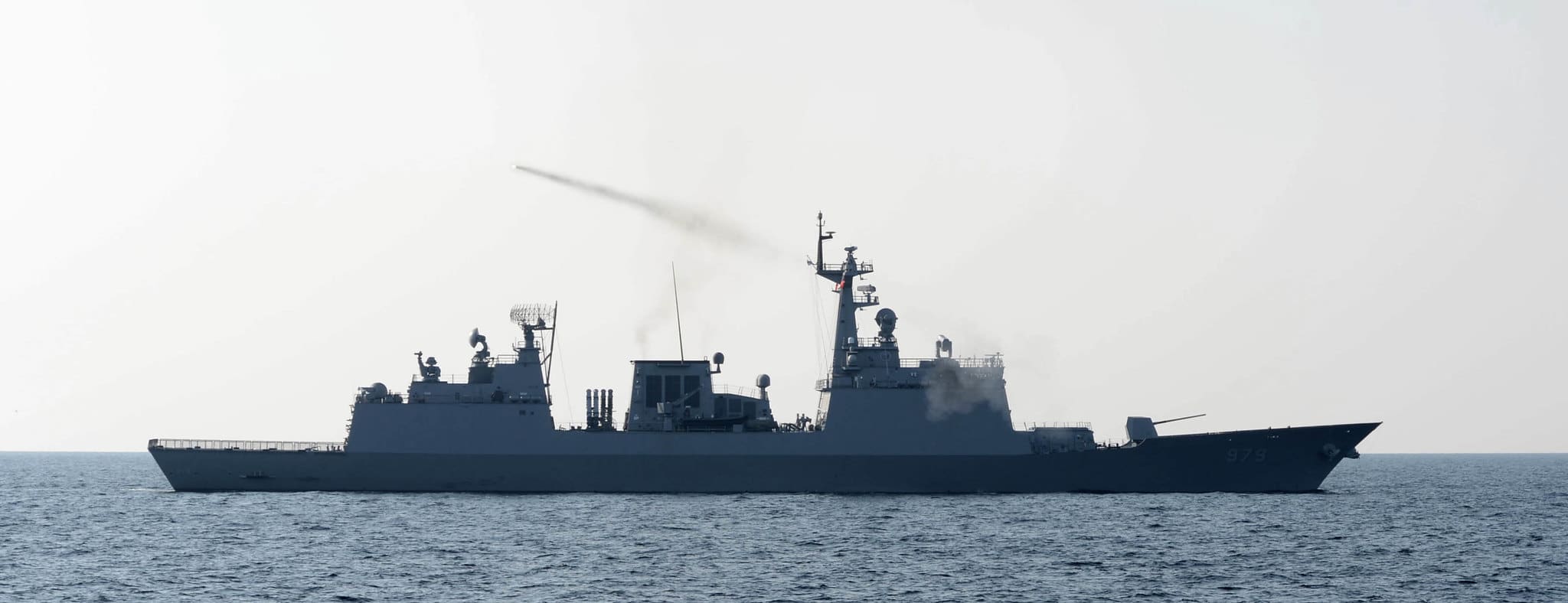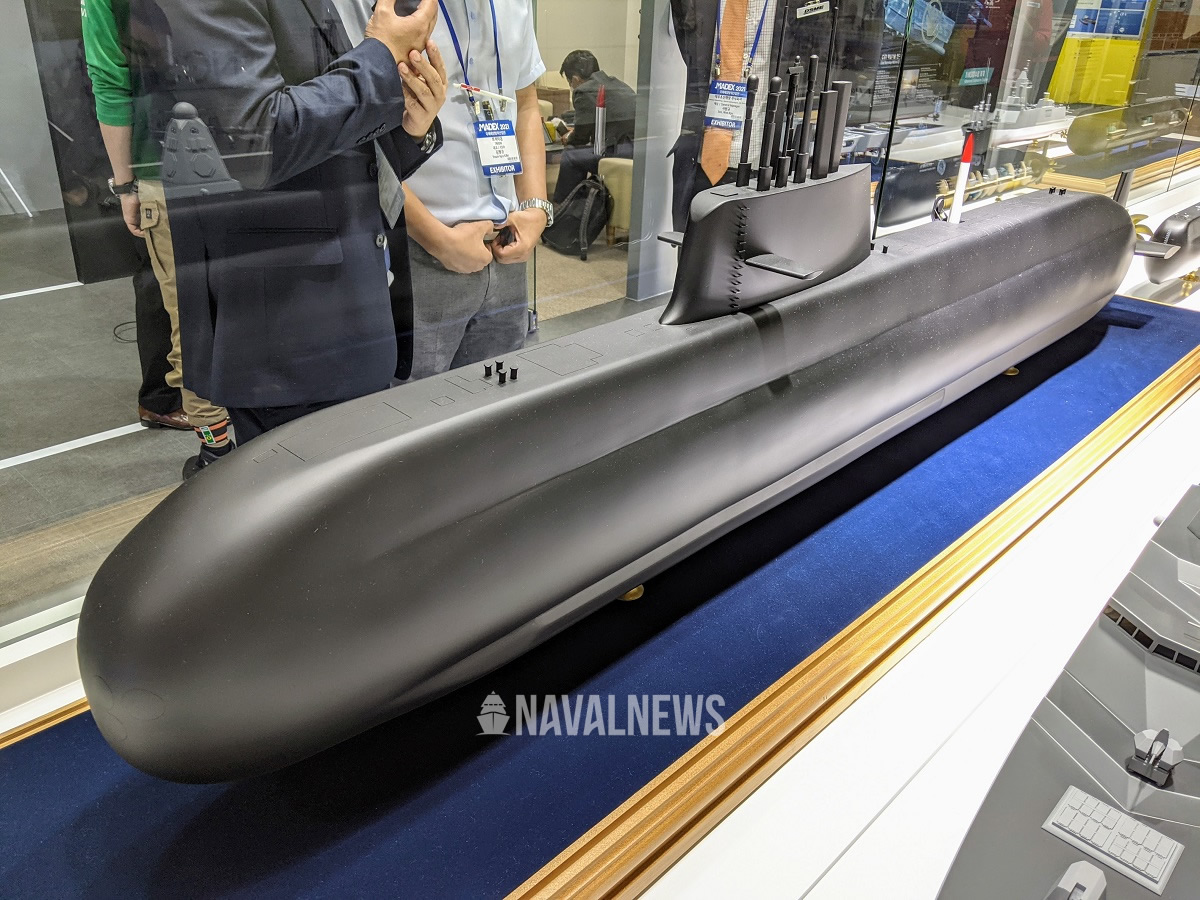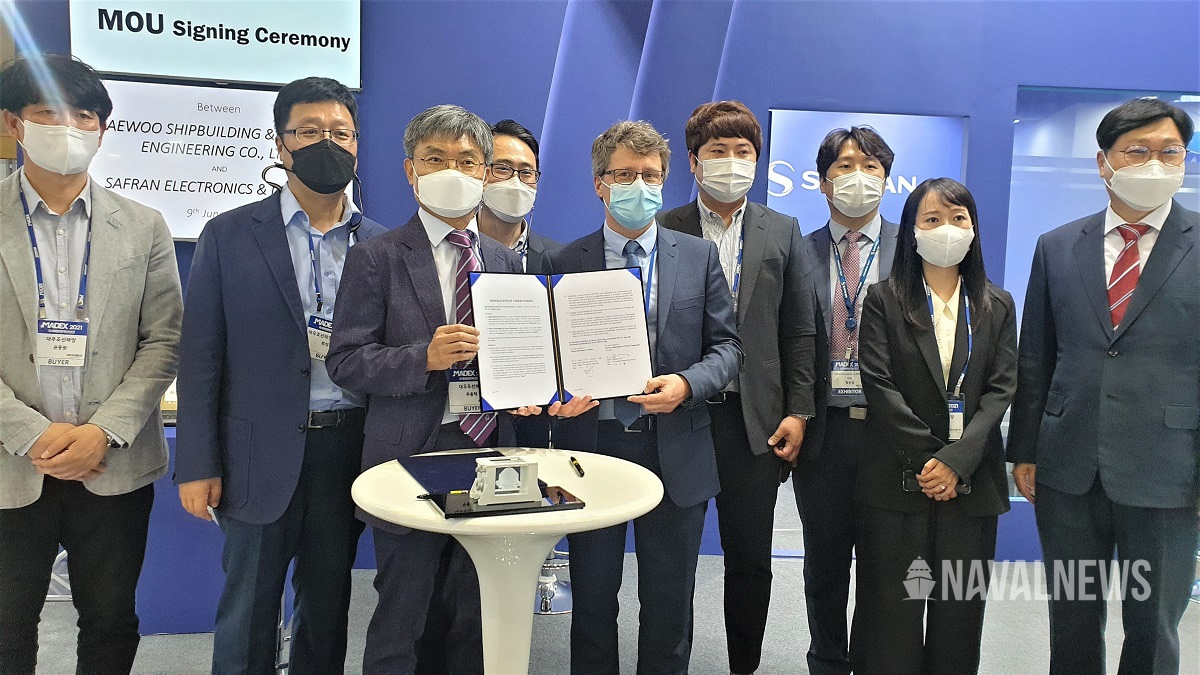South Korea’s KSS-III Batch 2 Submarine To Feature Both AIP And Li-Ion Batteries
Hyundai Heavy Industries (HHI) is currently building the third submarine of the KSS-III Batch 2 project in partnership with Daewoo Shipbuilding Maritime Engineering (DSME) Naval News learned at MADEX 2021 in Busan, South Korea.
Daehan Lee 18 Jun 2021
Daehan Lee story with additional reporting by Xavier Vavasseur
Submerged speed and snorkel speed can reportedly reach 20 knots and 12 knots respectively, and Batch-1 submarines have six Vertical Launching System (VLS) cells for submarine-launched ballistic missiles (SLBM) and six torpedoes, an engineer from HHI explained. He told
Naval News that Batch-1 adopted air-independent propulsion (AIP) system, also mentioning that designs of the three Batch-1 submarines by HHI and DSME are identical.
We learned during an interview with HHI at MADEX 2021 on June 10th, 2021, that the three submarines have been built by both shipbuilding companies in turn. DSME was in charge of the detailed design of the class and construction of the first and second submarines. The engineer confirmed that the second one from DSME was
launched in November 2020, and it will be delivered to the Republic of Korea Navy (ROKN) by 2022.
The third and final submarine of the first batch is still under construction at the HHI shipyard in Ulsan. Steel cutting took place in 2017, keel laying on 11 April 2019. The launch is expected to take place by year-end. Meanwhile, the first submarine of the class, ROKS
Dosan Ahn Chang-ho, continues sea trials.
When the engineer was asked about the next-generation submarines, also known as Batch-2 and Batch-3, he rejected to comment on further technical improvement and the possibility of loading SLBMs, by flatly observing that “
nothing has been decided“. Korea defense journalist Yong-won Yoo of the well-known Korean daily media,
Chosun Ilbo,
previously reported that Korean SLBMs will be based on Hyunmoo-2B ballistic missiles (500 km range). According to the same source, KSS-III Batch-1 Dosan Ahn Changho-class submarines will have 6 VLS, wile Batch-2 and Batch-3 submarines will feature 10 VLS. He also quoted a military source who said:
“A submerged launch test will be conducted in 2021 [from Dosan Ahn Changho] and the specific date for it remains undecided, but the day after North Korea launches its SLBM would be highly likely”.
Avoiding any confirmation about project details, HHI stressed,
“Information about surface ships tend to be more public. We are very cautious when it comes to secret projects like next-generation submarines and believe that it is strategically appropriate not to disclose facts about military possessions or development. Shipbuilding companies’ manpower related to submarine planning and construction are separately classified and managed. They are very reluctant to openly discuss ongoing submarine acquisitions even among employees, except with those in charge”. Nonetheless, an HHI booth guide tipped off to
Naval News that other propulsion systems and tonnage increase might be considered in next Batches, showing hope that the next acquisition priority after CVX (light aircraft carriers) would be submarines due to its importance.
AIP system and Li-Ion batteries
In 2019, the Defense Acquisition Program Administration (DAPA) decided to choose Hanwha Defense as a supplier of lithium-ion battery for KSS-III Batch-2 submarines. During an interview with the Chief Research Engineer of Hanwha Defense, Moon-hee Jang, at MADEX 2021, he confirmed the project was on schedule and that the company will start test readiness review of lithium-ion battery this month, preparing for land-based tests by 2022. He indicated that it will be installed on the first ship of KSS III Batch-2 in 2027.
Jang emphasized significantly improved energy efficiency that will come from the battery’s longer life cycle, by quoting a graph showing that lithium-ion will last 300% longer in full speed, and 160% longer in a cruising mode.
“Batch-2 submarines will have both AIP propulsion systems and lithium-ion batteries, which will increase the submerged endurance to more than 20 days at sea.”
Moon-hee Jang, Hanwha Defense
Charging cycle is secret and the ROKN has not given any information about it.
According to him, lithium-ion battery passed rigorous tests under extreme conditions of fire, salt water, short circuit, shock, and heat. Hanwha also cooperated with KERI (Korea Electrotechnology Research Institute), ADD (Agency for Defense Development), and DTaQ (Defense Acquisition Technology and Quality) to analyze fire accident datum and reflected research outcomes in planning the battery.
Chief Research Engineer Jang concluded his remark showing pride:
“Stability and reliability are our main interests. We can confidently say that it will be the safest battery in the world, which is expected to be the world’s second deployment after Japan. Hanwha has expanded to commercial sectors by applying this advanced technology and acquiring price competitiveness. We already won four contracts from the Korean government”.
The lithium-ion battery system for the KSS III Batch-2 submarines is composed of the following:
- 24 cells per tray
- 8 trays per modules
- X (undisclosed number of) modules per strings
- X (undisclosed number of) strings
- The strings are split in two battery groups: About 100 strings located forward and another 100 strings placed aft, at the bottom of the submarine hull.
Cells come from Samsung SDI and are based on COTS (commercial-off-the-shelf) technology, similar to cell phone batteries. As the Chief Research Engineer explained, this solution is likely to be more affordable compared to those of competitors, Japan and Europe.
Hyundai Heavy Industries (HHI) is currently building the third submarine of the KSS-III Batch 1 project in partnership with Daewoo Shipbuilding Maritime Engineering (DSME) Naval News learned at MADEX 2021 in Busan, South Korea.

www.navalnews.com

 www.navalnews.com
www.navalnews.com











